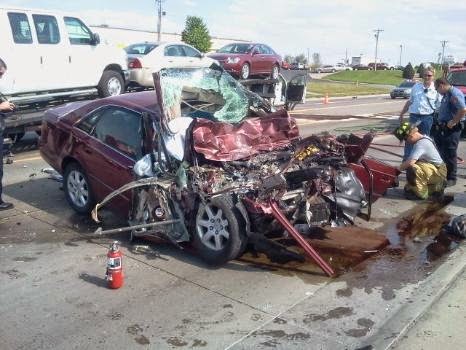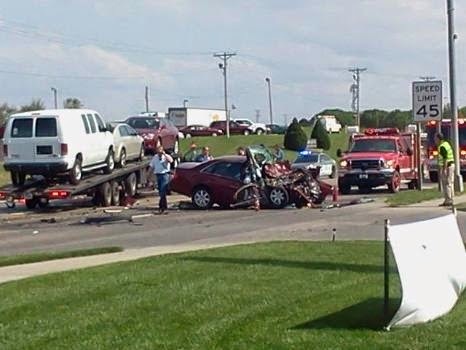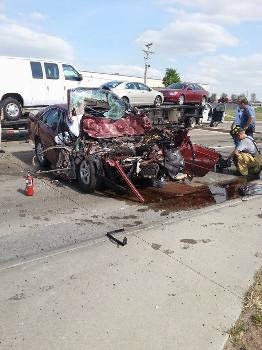 Who:
Evan Christian Hendriadi, 50; Lio Kim Tjhiuw, 78; and Jenny Sudjono, 70, all from the same family, died just after 4:30 AM in Phoenix, AZ on 5/16/14 in the southbound lanes of I-17, immediately south of the Bumble Bee exit, when their 2011-era Toyota Sienna was hit by a wrong-way Chrysler 300 driven by a Phoenix man in his 60s, who was seriously injured in the collision. The collision occurred close to Sunset Point. Three others in the Sienna, including a 9-year-old boy, were seriously injured.
Who:
Evan Christian Hendriadi, 50; Lio Kim Tjhiuw, 78; and Jenny Sudjono, 70, all from the same family, died just after 4:30 AM in Phoenix, AZ on 5/16/14 in the southbound lanes of I-17, immediately south of the Bumble Bee exit, when their 2011-era Toyota Sienna was hit by a wrong-way Chrysler 300 driven by a Phoenix man in his 60s, who was seriously injured in the collision. The collision occurred close to Sunset Point. Three others in the Sienna, including a 9-year-old boy, were seriously injured.
How:
The Sienna was southbound on I-17 while the 300 traveled the wrong way northbound on southbound I-17. A number of passers-by called 911 to alert police, and 5 highway patrol officers as well as a helicopter tried to stop the wrong-way vehicle. They were not able to reach the vehicle in time, and the collision occurred. Charges are pending.
Why:
This is another sad case of a wrong-way driver leading to needless fatalities. While the official reports have not been released, I have to wonder if the 300 driver was drinking, based on the profile of the collision, such as the time (drunk drivers are far more likely late at night) and the behavior (wrong-way driving is much more common among drunk drivers).
Let’s look at the physics in effort to unpack why so many individuals died in what should have been one of the safest vehicles on the road today. The 2011-era Sienna is a safe, solid vehicle. It weighs ~4342 lbs and comes with a “good” frontal score. It was impacted by a Chrysler 300, which weighs between ~3726 and 3961 lbs, depending on the year, and also comes with a “good” frontal score. Presuming it was on the higher end of the scale, that would mean the Sienna automatically faced 9% less force in the collision than it would have colliding with another Sienna. In other words, the weights are close enough to be considered negligible.
Given the likely speeds of the collision (~75 mph, the Arizona highway PSL), the collision likely imparted at least 1.01MJ of energy into the Sienna. The Sienna frontal impact test simulates 315KJ of energy (a Sienna impacting another at 40 mph). In other words, the Sienna faced 321% of the force it would have experienced in the type of crash the vehicle was rated for. That ratio is easily enough to cause fatalities, as has been the case in many of the collisions I’ve looked into. But the driver survived these forces, as did two other individuals in the vehicle. However, three others did not. I imagine the advanced ages of two of the individuals who perished played a significant role in their demises, as one’s risk of severe or fatal injury increases inexorably with age after one reaches adulthood. It is also possible that they may have been unbelted, although statistically, seat belt compliance rises with age. A review of the image of the Sienna suggests vehicular integrity was maintained extremely well, especially compared to the 300, where the driver’s survival was a surprising, though, fortunate occurrence.
Whatever the reason, when dealing with 300% of the forces a “good” scoring vehicle is designed to withstand, survival odds, based on the crashes I’ve looked into, are low. I’d tentatively estimate they’re on the order of 25% based on a quick mental review of previous cases. There are forces that are simply too large for the human body to withstand.
Once again, this was another completely preventable tragedy. Whether or not alcohol was involved, and I suspect it was, distracted driving was certainly a factor, and it cost three innocent people their lives.
If you find the information on car safety, recommended car seats, and car seat reviews on this car seat blog helpful, you can shop through this Amazon link for any purchases, car seat-related or not. Canadians can shop through this link for Canadian purchases.



 Who:
Who:





 Who:
Who:
 Who:
Who: